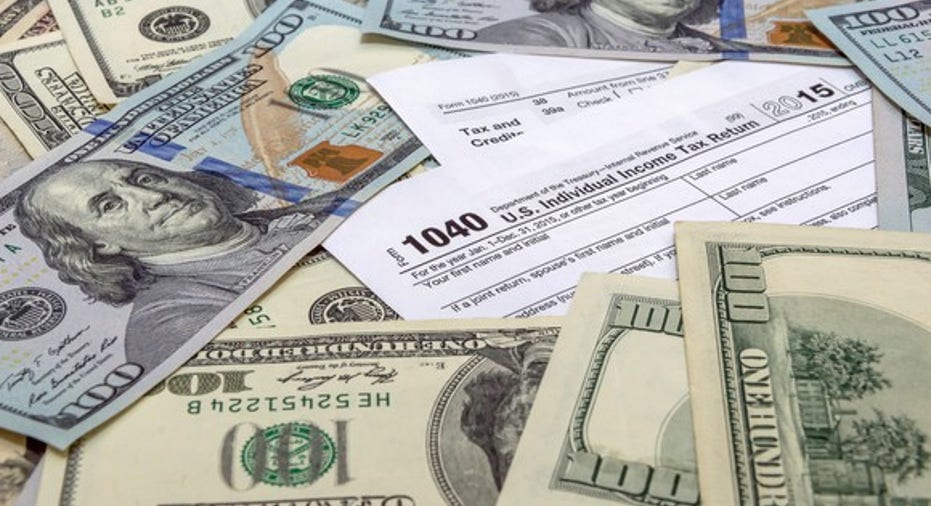Trump's Tax Plan: What to Expect in 2017 and Beyond

Donald Trump's tax changes could put more money in the pockets of most Americans. Image source: Getty Images.
Not only did Donald Trump win the presidency last night, but the Republican party retained control of both the House of Representatives and the Senate. This means that the tax plan Donald Trump has proposed, which is mostly in line with the ideas of the rest of his party, could actually happen, resulting in the biggest overhaul to U.S. tax code in decades. Here's what it could mean to your personal income taxes if Trump's planned changes go into effect.
Fewer, lower tax brackets
Trump has proposed consolidating the seven current tax brackets into just three. Here's what the current tax brackets look like:
|
Marginal Tax Rate |
Taxable Income (Single) |
Taxable Income (Married filing jointly) |
|---|---|---|
|
10% |
$0-$9,275 |
$0-$18,550 |
|
15% |
$9,276-$37,650 |
$18,551-$75,300 |
|
25% |
$37,651-$91,150 |
$75,301-$151,900 |
|
28% |
$91,151-$190,150 |
$151,901-$231,450 |
|
33% |
$190,151-$413,350 |
$231,451-$413,350 |
|
35% |
$413,351-$415,050 |
$413,351-$466,950 |
|
39.6% |
$415,051 and above |
$466,951 and above |
Data source: IRS.
Moreover, high-income taxpayers are required to pay an additional 3.8% tax on certain investment income. Keep in mind that these numbers refer to taxable income, which is income after all deductions and exemptions are applied. Here's the system Trump has proposed to replace the current tax brackets:
|
Marginal Tax Rate |
Taxable Income (Single) |
Taxable Income (Married joint filers) |
|---|---|---|
|
12% |
$0-$37,500 |
$0-$75,000 |
|
25% |
$37,500-$112,500 |
$75,000-$225,000 |
|
33% |
$112,500 and above |
$225,000 and above |
Data source: Trump campaign website.
In addition, since one of Trump's more immediate priorities is to repeal the Affordable Care Act, the additional 3.8% tax on certain investment income would be eliminated.
Higher standard deduction, but no personal exemption
In addition to the consolidation of tax breaks, Trump has proposed simplifying the tax code further by eliminating the personal exemption and increasing the standard deduction amount from $6,300 to $15,000 for single taxpayers and from $12,600 to $30,000 for married joint filers.
Most Americans will benefit from this, but larger families could actually see their taxes go up. Currently, taxpayers can claim a personal exemption of $4,050 for themselves, their spouse, and their dependents. Since the standard deduction for a married couple could increase by $17,400, families of more than four people would get a better overall deduction under the current system.
No estate taxes
Republicans are largely opposed to the estate tax, seeing it as a form of double taxation. And this makes sense to many people. After all, you pay income taxes when you earn your money. Why should you have to pay taxes on the same money again when you leave it to your heirs? On the other hand, proponents of the estate tax say that it forces the wealthy to pay more, and is a way to add fairness to the tax system.
Whichever side you take on estate taxes, with a Republican president and Congress, Trump's proposal to eliminate the estate tax is now a realistic one. Under current law, estates valued at more than $5.45 million are subject to a 40% tax rate on the excess. So this proposal could save wealthier families quite a bit of money.
What it means for the average American family
Much of the talk about Trump's tax plan has to do with the fact that his tax cuts benefit the rich, and they do. Per the Tax Policy Center, about 47% of the benefits will go to the richest 1%. However, the average American family will feel the impact of Trump's plan as well. Here's a thorough discussion of how much the average household pays in federal income taxes, but the short version is as follows:
The average tax return currently shows adjusted gross income of $65,751, and 35% of Americans don't pay any federal income tax right now, so Trump's claim that 50% of the population won't pay any federal income tax under his presidency seems realistic.
Under Trump's plan, the average single filer would get an additional $4,970 deduction from the combination of the higher standard deduction and elimination of the personal exemption, and the average married couple filing jointly would realize a $5,918 increase in their deduction. In addition, Trump has proposed additional tax breaks for child care, as well as a reduction in taxes for businesses, both big and small.
When the tax cuts are considered together with the lower tax rates, it's safe to say that the average American will see his or her taxes go down during the next four years.
The $15,834 Social Security bonus most retirees completely overlook If you're like most Americans, you're a few years (or more) behind on your retirement savings. But a handful of little-known "Social Security secrets" could help ensure a boost in your retirement income. For example: one easy trick could pay you as much as $15,834 more... each year! Once you learn how to maximize your Social Security benefits, we think you could retire confidently with the peace of mind we're all after.Simply click here to discover how to learn more about these strategies.
Try any of our Foolish newsletter services free for 30 days. We Fools may not all hold the same opinions, but we all believe that considering a diverse range of insights makes us better investors. The Motley Fool has a disclosure policy.



















